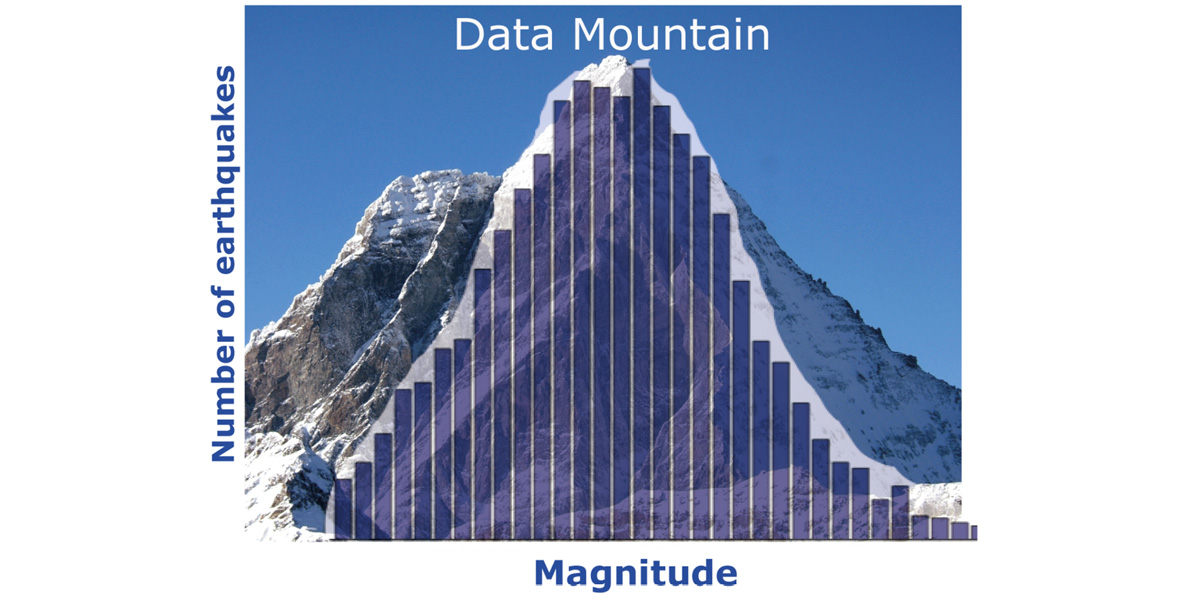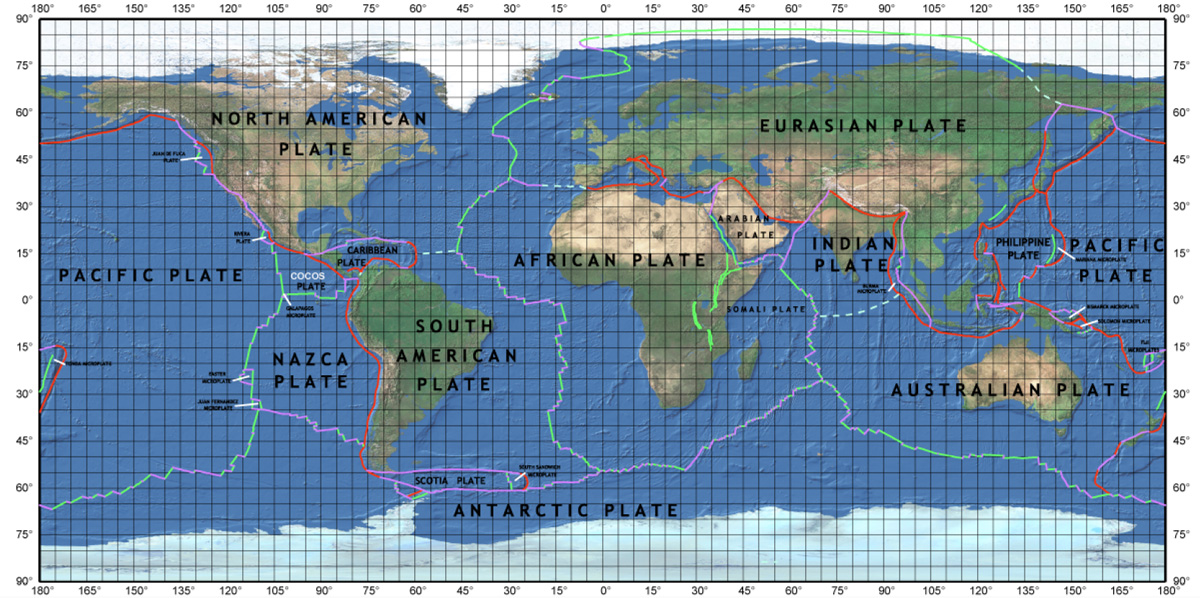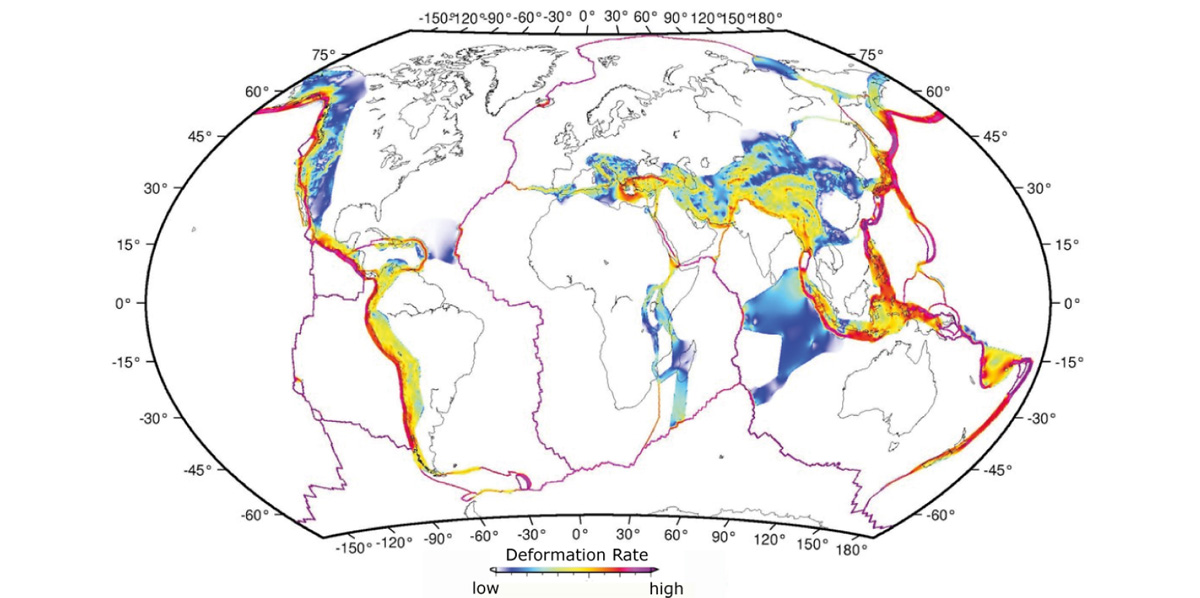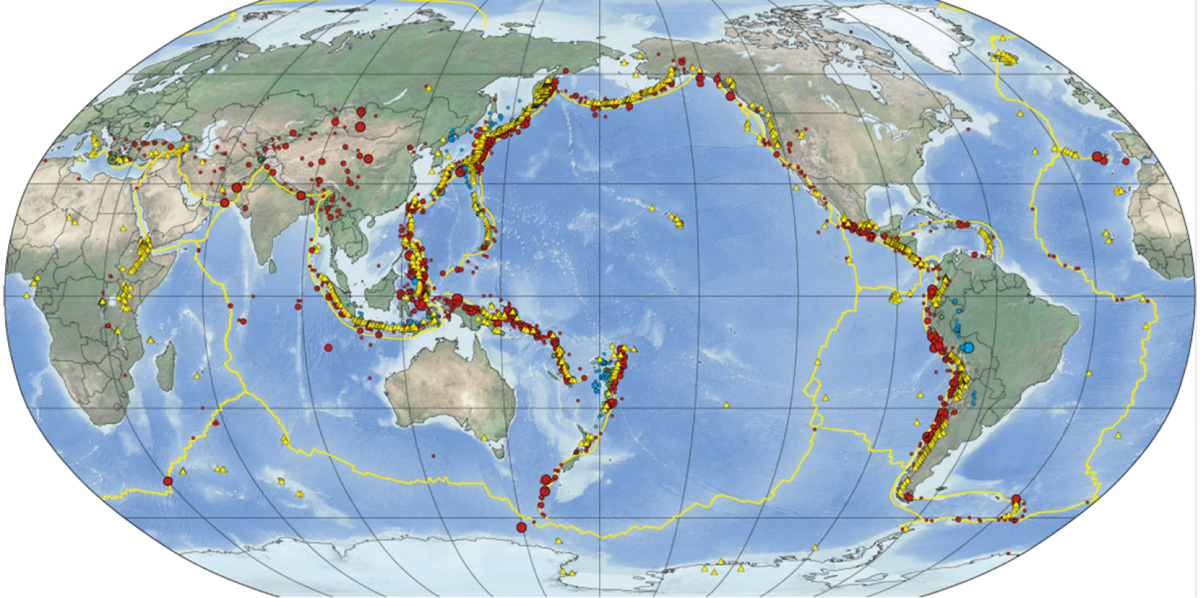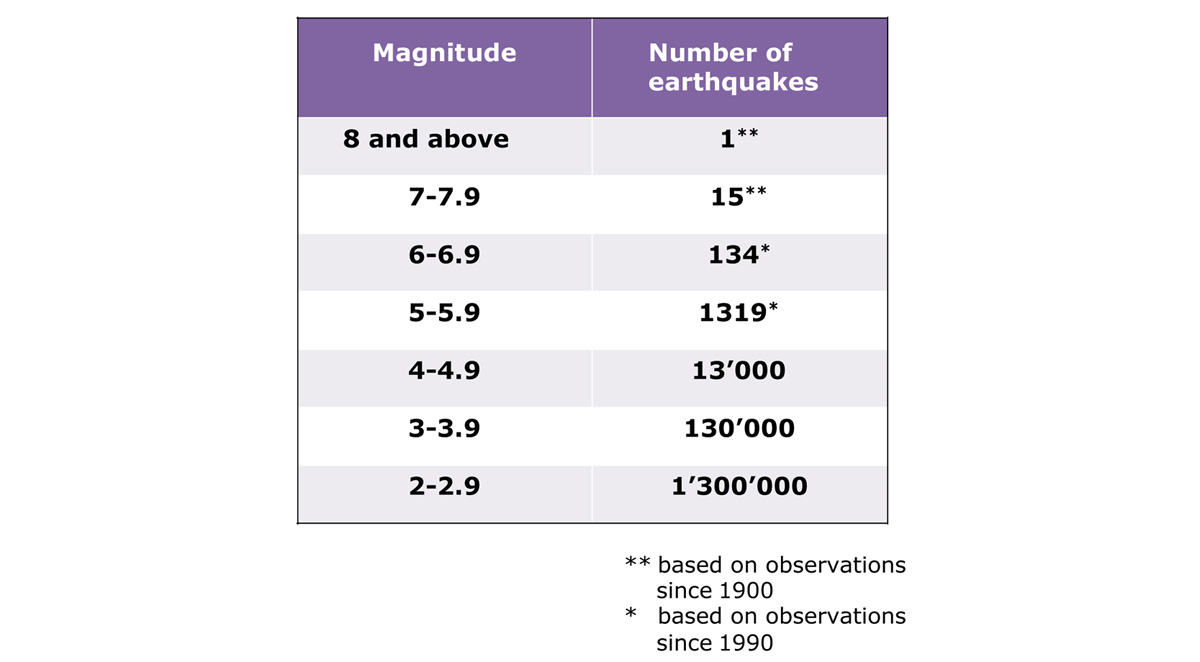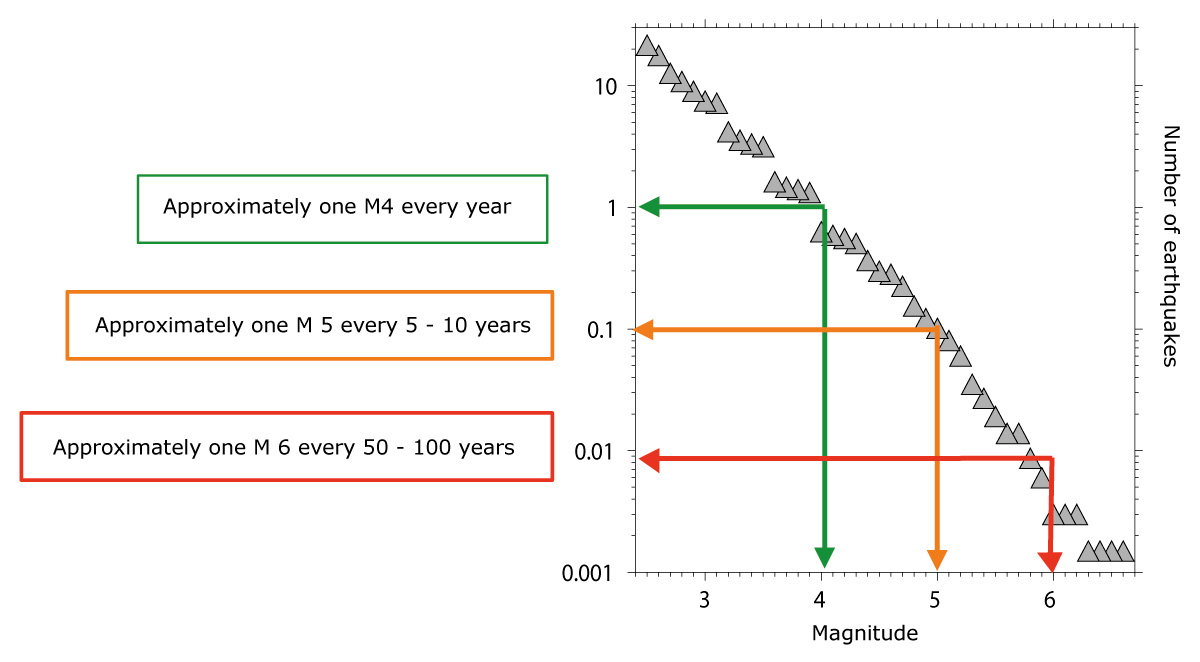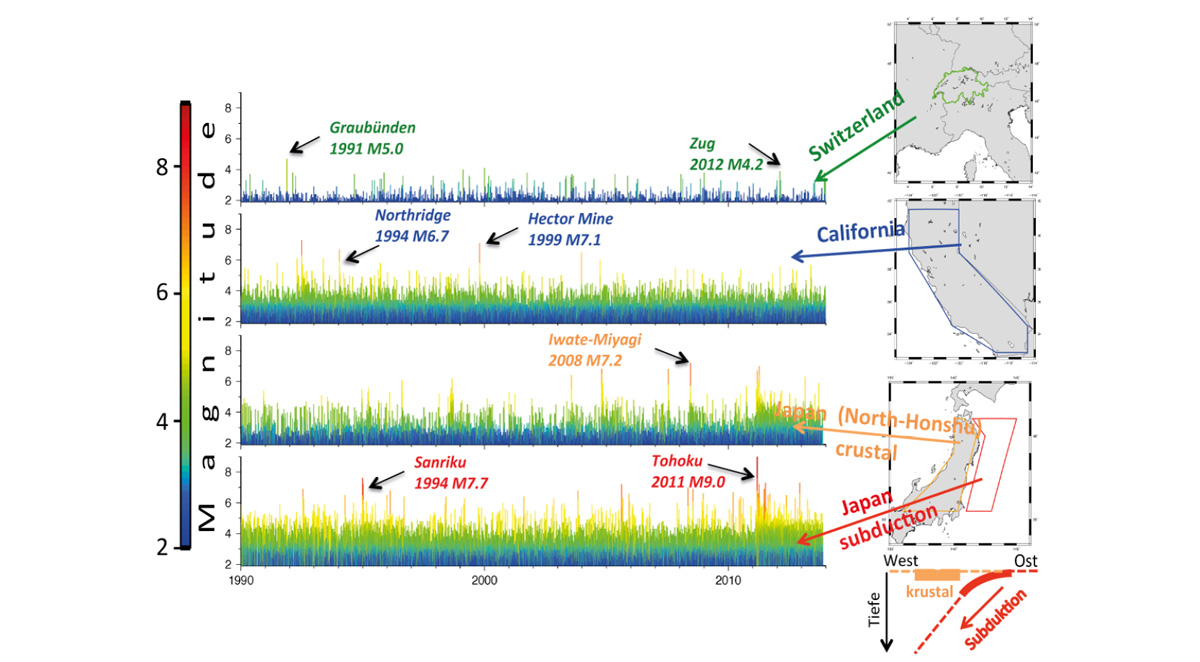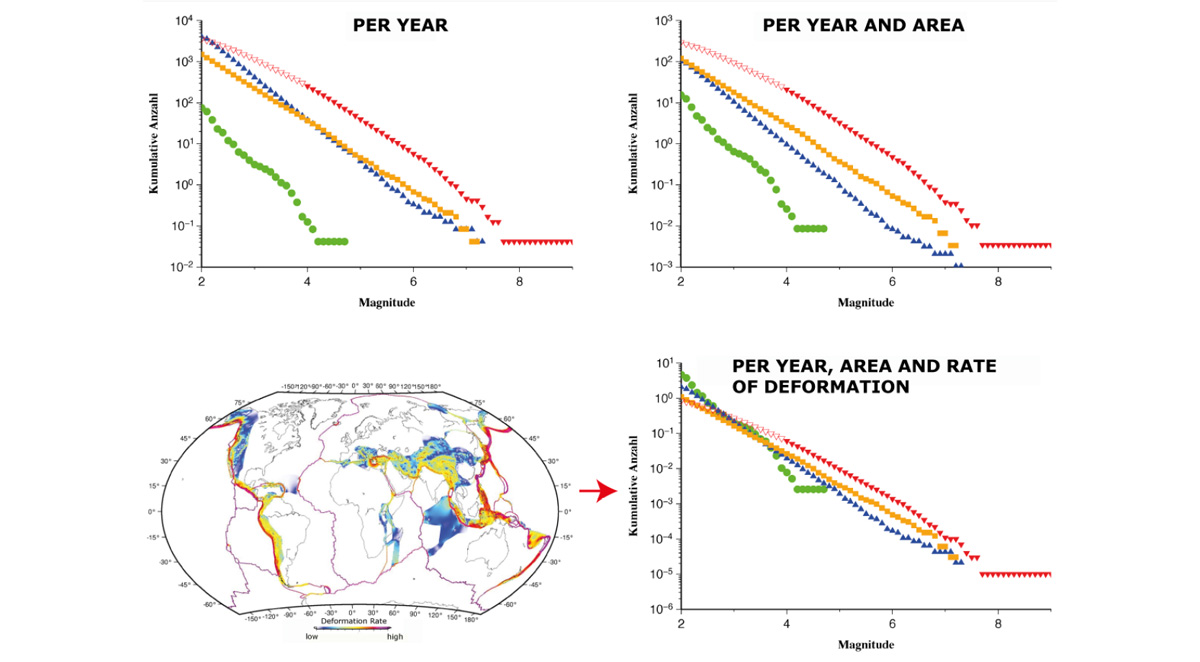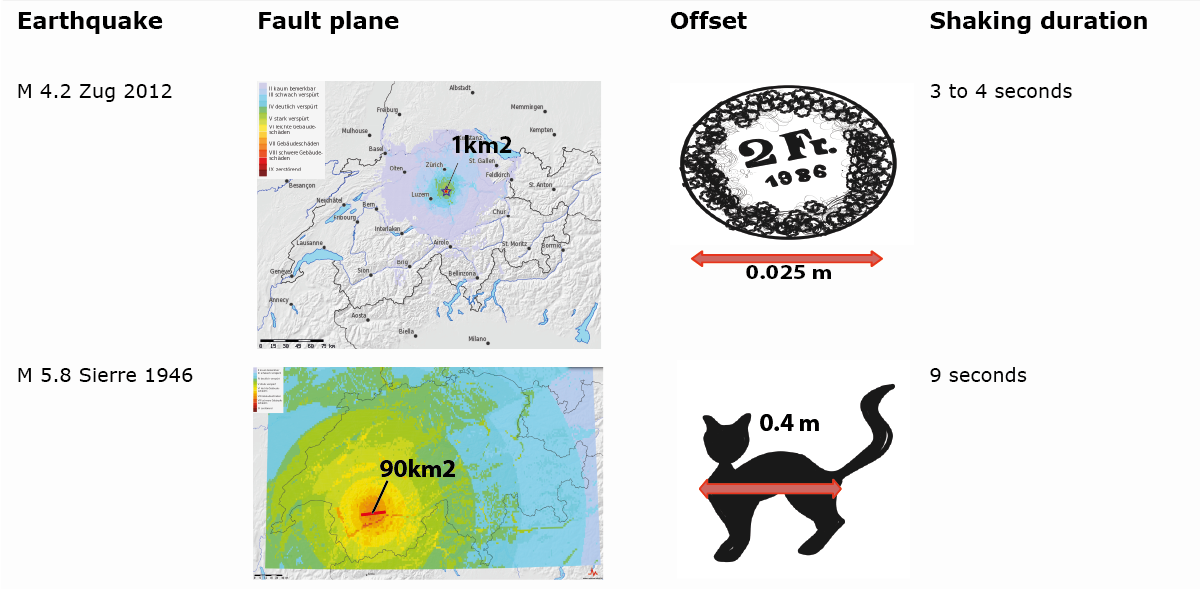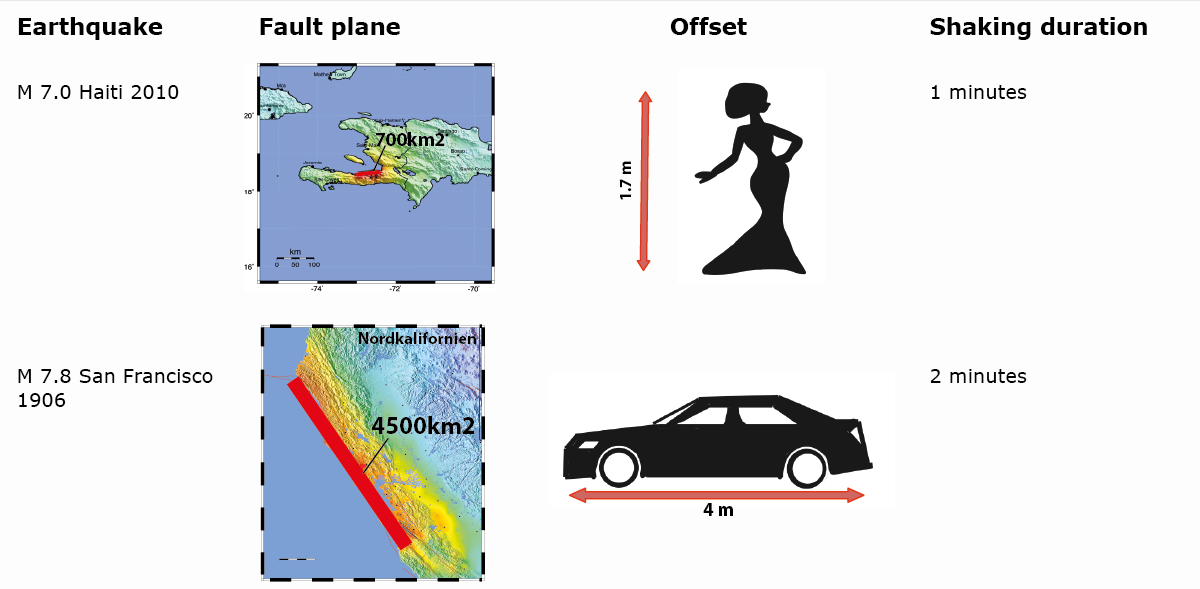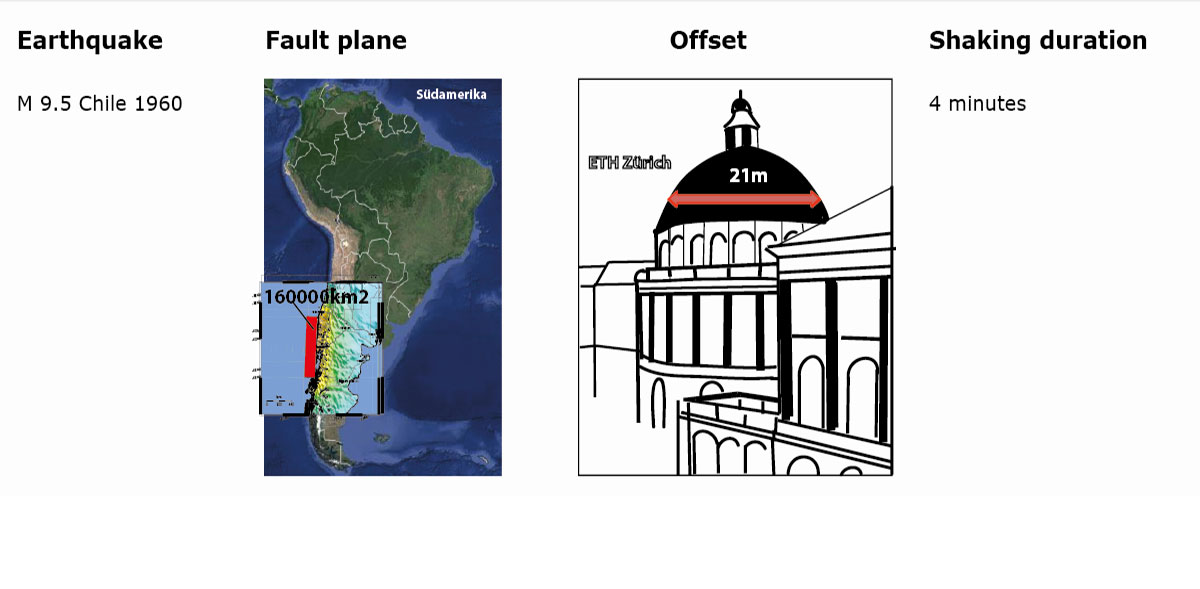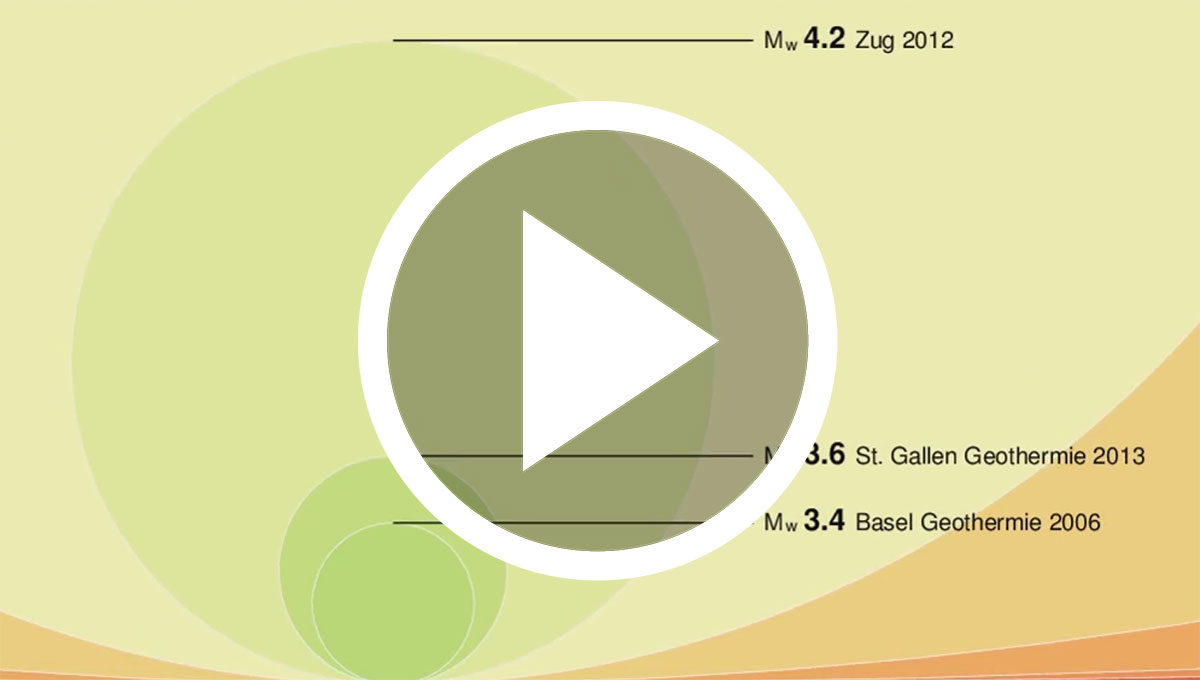Earthquakes in the Data Mountain
Seismologists are keen collectors of data. Their networks of seismometers allow them to map ground movements during earthquakes all over the world and amass huge amounts of data. The Swiss Seismological Service alone accumulates two to three terabytes of data on recorded earthquakes every year, which comes to more than 3,000 gigabytes.
More Seismometers, More Earthquakes
The denser the network and the better the measuring devices are, the smaller the earthquakes that can be reliably recorded. Every day, the Swiss Seismological Service records multiple earthquakes that are too weak to be felt. The recording quality in highly seismically active areas such as California and Japan is as good or better, but there are still earthquakes that go undiscovered under the world’s oceans that would be strong enough to cause minor damage if they took place in a city.
If enough seismometers could be distributed around the world to record all of the earthquakes with a magnitude of 2 or higher, there would be around one and a half million earthquakes a year, with one happening every 20 seconds on average. Recording all of these earthquakes reliably would require at least four stations in close enough proximity to each individual earthquake.
As soon as the seismic stations are able to record the ground movements for an earthquake, information about the waveforms can be used to determine the location and strength of the earthquake. All recorded earthquakes are incorporated into local, regional, or global earthquake catalogs. These catalogs contain lists of the times, the places, and the magnitudes of all recorded earthquakes (see ECOS-09).
In Switzerland and its neighbouring countries, the Swiss Seismological Service has recorded just under 100 earthquakes with a magnitude of 2 or higher (noticeable in the immediate vicinity) every year, while in California there have been more than 5,000. Here, too, there are actually more earthquakes occurring, but they are too weak to be recorded by the seismic network. Only extremely sensitive, local networks installed, for example, as part of industrial projects, are able to record and determine the location of even tiny ruptures.
The size of earthquakes is normally described in terms of magnitude. But what does this mean?
Magnitude is a measure of the energy released by an earthquake. Each increase in the unit of magnitude is equivalent to a 30-fold increase in energy. As a result, the energy of the Tohoku earthquake (magnitude of 9.0) is around 1,000 times that of the Haiti earthquake (magnitude of 7.1). You can see how the energy released increases exponentially in the video.
